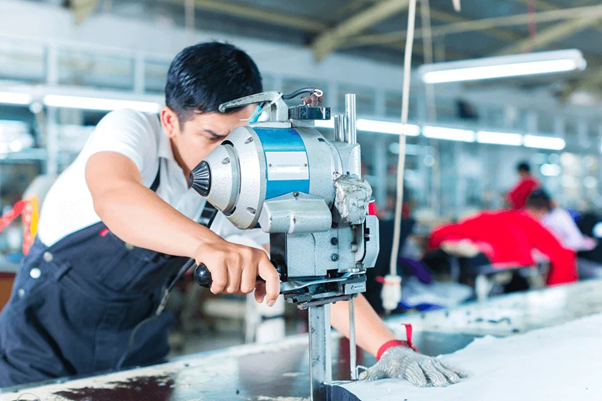The five fundamental elements of textile manufacture are fibre, yarn, fabric, dyeing, and finishing. Organic or synthetic fibres serve as the base and are spun into yarn to provide both durability and adaptability. After being knitted or woven into textiles, these yarns are dyed to provide the required hues. Texture, durability, or functionality—like breathability or wrinkle resistance—are improved by the finishing process. Every element guarantees that the finished product satisfies quality standards, making it appropriate for a range of uses, including household linens. T & A textile wholesale household linens place a premium on durability at every level, providing their customers with items that are adaptable, dependable, and attractive to look at.
Choosing Fabre
The fibres utilized form the basis of all fabrics. The two types of fibres are synthetic (polyester, nylon, acrylic) and organic (cotton, wool, silk). The intended use, durability, and aesthetic standards all influence fibre selection. While synthetic fibres provide durability and cost-effectiveness, natural fibres are renowned for their ability to be environmentally friendly and enjoyable. Choosing fibres of superior quality guarantees a dependable foundation for subsequent procedures.
Turning Around
Fibres are aligned and made into seamless, robust yarns in this process by carding, combing, and drawing them. Different spinning methods, like rotor and spinning on rings, are appropriate for different kinds of textiles. The final textile output is greatly influenced by the yarn’s qualities, such as thickness, texture, and durability.
Blending and Types of Yarn
The qualities of the cloth can be significantly impacted by the type of yarn employed. According to what kind of feel you want, you can use extravagant, plied, or single yarns. Blending fibres, like cotton and polyester, improve the qualities of the fabric by fusing the resilience of synthetic materials with the softness of natural fibres. For the result to be identical, yarn quality and consistency are crucial.
Printing and Dyeing
While printing provides ornamental trends, dying gives textiles colour. Dyeing can happen to fibre, yarn, or cloth at different stages. Vibrant and durable colours are guaranteed by methods like responsive dyeing, vat dyeing, and tie-dying. Electronic printing and screen printing are two printing techniques that enable complex designs and personalization. In the creation of textiles, proper dyeing and printing methods are crucial because they guarantee colourfastness and aesthetic value.
Control of Quality
Every step of the textile manufacturing technique is guaranteed to satisfy demands from the industry thanks to quality control. To ensure uniformity and dependability, tests are performed for bending strength, colorfastness, loss of volume, and resistance to abrasion Quality and efficiency are improved by modern innovations such as computer-aided design (CAD) and automated inspections. Only high-quality textiles are guaranteed to make it to market thanks to quality controls.
Eco-Friendly Methods
Sustainability is highly valued in the contemporary textile sector. The environmental impact is reduced by practices including recycling fibres, utilizing eco-friendly dyes and implementing energy-efficient techniques. In addition to satisfying consumer demand for environmentally friendly items, sustainable techniques also save resources and cut down on waste. Responsible textile manufacture now includes both ethical sourcing and production.
Logistics and Packaging
After the fabric is completed, logistics and packing play a critical role in ensuring secure custody and transit. To avoid destruction during transportation, fabrics are carefully folded, rolled, or wrapped. The ability to track is ensured by appropriately labelling with information such as fabric kind, width, and length. Delivery can be simplified by efficient supply chains, guaranteeing that fabrics arrive at wholesalers and retailers on schedule.
Adherence to Regulations
In the manufacturing process of textiles, adherence to industrial norms and laws is crucial. This entails abiding by ethical, and external factors and occupational regulations. Certifications guarantee that fabrics are made in an environmentally friendly, and safe manner. Complying with regulations also helps manufacturers avoid fines and gain the trust of consumers.
Final words
The process of producing textiles is complex and blends technology and creativity. Every element, from the choice of fibre to innovative techniques, helps produce fabrics of outstanding workmanship. The textile sector has the opportunity to create goods that are adaptable, strong, and visually appealing by concentrating on these elements. The sector is constantly changing, providing countless opportunities for innovative and useful textiles, thanks to the expanding focus on conservation and technical breakthroughs. Complying with regulations also helps manufacturers avoid fines and gain the trust of consumers.


